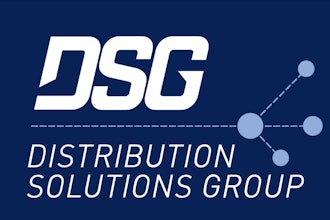In his excellent book, “Islands of Profit in a Sea of Red Ink” (ISBN: 978-1-59184-349-8), Jonathan Byrnes of MIT says, “Strategy is defined by what you say ‘No’ to.” This is some of the best business advice I’ve heard, because following it can have a profound effect on the results that come from what you and your people dedicate time and effort to. It’s also the underlying driver of superior profit performance.
Throughout your business, there are numerous things that populate a continuum of profit-value. Various products produce profits or losses, some vendors produce more profits than others, people are more or less productive, and customer relationships vary through a wide range of profit or loss contribution. In all these areas (and more) there’s a mix of the valuable and the detrimental, and managing this is the biggest opportunity to control profits.
There’s a vital difference in mindset between top leaders and the back of the pack. Results-getting leaders view the winners and losers for what they are — contributors to, or destroyers of, cash-flow and profits. Back-of-the-pack managers view everything as good” and “not as good” — they feel everything has “some” value, and this philosophy completely blocks their ability to improve much at all. Combine this with a lack of confidence about their team’s ability to target and win the best business, and you have a recipe for “below average, trending to poor” performance. They simply value mediocre business too much to allow any productive focus on business with real profit value.
At our firm, WayPoint Analytics, we use detailed transaction data and financial statements of hundreds of distributors to compute the incremental costs and profits of every invoice, customer, product and territory in over $75B in wholesale distribution business. Analyzing 10 years of history, we see a direct correlation between profit contribution mix and profit rates. Very low rates of money-losing transactions correlate to extremely-high profit rates. (Figure 1)
Whether your company has money to burn, or is hanging on by its fingernails, it’s directly determined by your mix of profitable to unprofitable accounts and transactions.
If your company is typical, about 40 percent of your customers will be generating losses, and this mix is what drives low profits, and cash-flow challenges. Companies with super-high profit rates have shifted this balance, achieving mixes where the number of money-losing customers approaches zero. They focus all their energy to giving superior service to high-profit accounts, and they have the cash-flow to spend lavishly on customer service and aggressive pricing.
There’s another key difference in the way high-profit companies operate. They have detailed cost analysis systems (our specialty) and manage profit, not margin. They’re not lured into the expensive mistakes most companies make, where more than half their sales have costs that exceed gross profit, yet nobody can see or manage the problem. And it’s oh-so-easy to get high-margin sales that lose money — companies do it all day long, and it’s what gets them in serious trouble.
You want to look at profit rankings, not just for customers, but for vendors, products, and sales territories as well. Armed with this data, you can tilt your efforts toward the biggest profit contributors. Target better service and more aggressive pricing to win the type of accounts that have high-efficiency, high profit relationships, and the opposite for those on the other side of the scale.
You can examine your product profit rankings and find out which products and services attract the high-profit accounts, and which the money-losers. Shift the product mix for a better balance that attracts and serves the high profit accounts.
The ideal is to have only the good, none of the bad, and this is what the companies with 20 percent-plus profit rates are doing. These companies have a common strategy — they say “No” to low-efficiency, money-losing account relationships, “No” to products that attract money-losing activities, and are consumed with getting every high-profit account, and every profitable sale. They’re sucking up all the profit oxygen in their markets, and their competition is slowly suffocating.
The scale of the opportunity is huge — most companies never see three-quarters of the profit they actually make from their best accounts — it’s consumed by losses from the rest. This is why shifting the balance produces profit gains of 100-, 200 percent and more. It’s the best opportunity for rapid and significant gains. Even a slight shift in mix that produces only modest gains will propel your company past previous records.
Check out the Profit-Tips channel on YouTube for a video version of this article, and for more short videos on strategies and techniques for profit gains. You’ll find topics like profit-value customer segmentation, using whale curve analysis, the elements of efficient relationships, avoiding margin management and more. Invest a few minutes to discover what’s new and really effective.
The takeaway is that when you recognize that your success is wholly determined by your mix of low-cost, highly-efficient, high-profit accounts, you can use your profit reports to relentlessly focus on winning and holding the bulk of the profits available in your market. As you change the balance between the money-makers and the money-losers, you’ll deliver profit rates beyond your history and everyone’s expectations.
When you recognize that your success is wholly determined by your mix of low-cost, highly-efficient, high-profit accounts, you can use your profit reports to relentlessly focus on winning and holding the bulk of the profits available in your market. As you change the balance between the money-makers and the money-losers, you’ll deliver profit rates beyond your history and everyone’s expectations.
Randy MacLean is the founder of WayPoint Analytics, and the best-selling author of three books on business profitability. Leading distributors and manufacturers rely on the WayPoint system to measure and monitor costs and profit for competitive advantage in every aspect of their accounts and activities. A native of Canada, he's resided in Scottsdale Arizona with his wife and dogs for more than 25 years.























